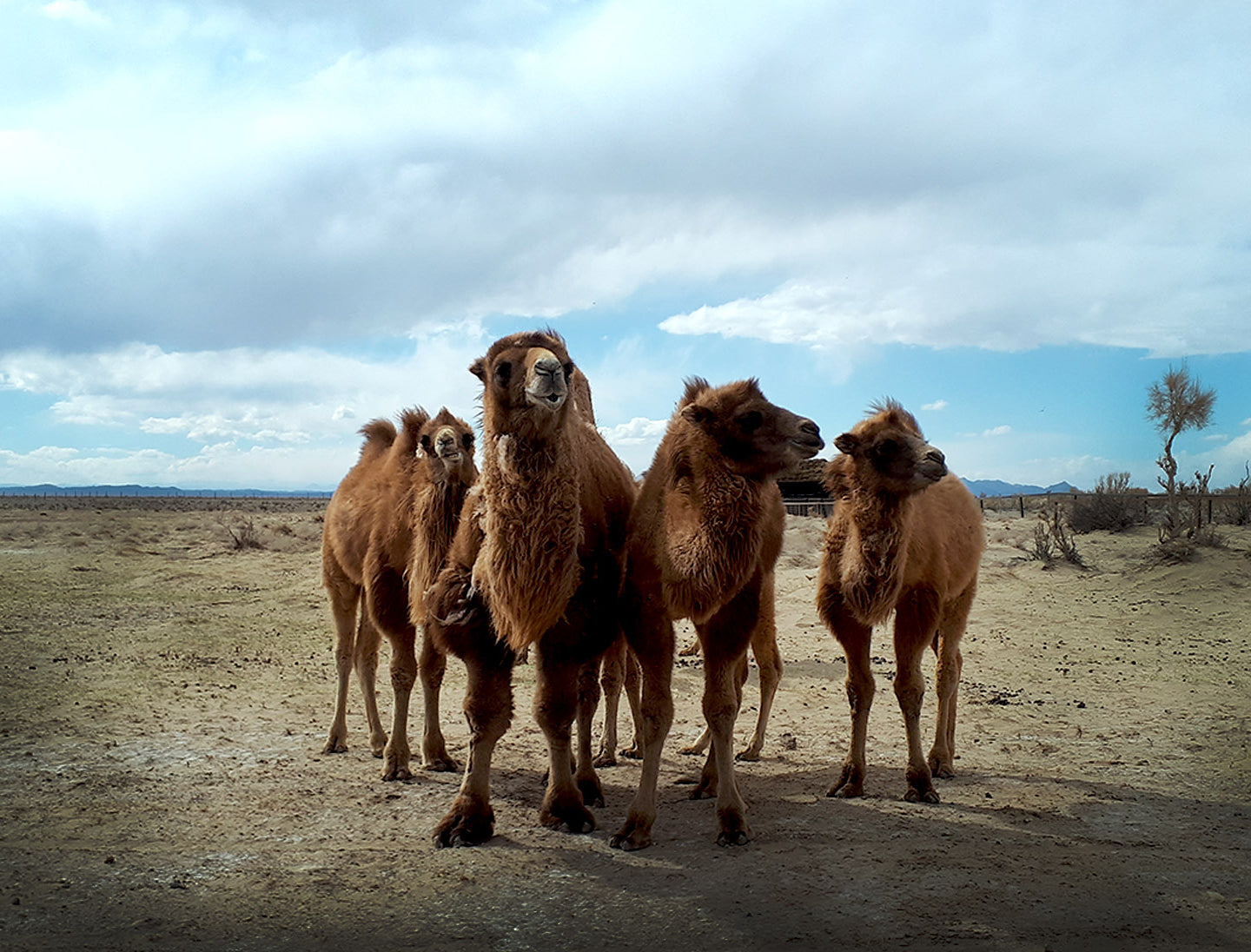
A scientific study in the Gobi Desert of the endangered wild camel highlighted the importance of Alpkit drybags
In 2019 a scientific programme was started to study the critically endangered wild camel (Camelus ferus), to try and discover more about this amazing creature and what threatens its survival in the Gobi Desert. We were excited to hear from wild camel expert Anna Jemmett that Alpkit drybags held a vital role in this expedition.

Product development process starts with research.what's worked, what's not, listening to customer feedback, market research and identifying the opportunity. As our product manager Laura testifies.
"When starting the design process you really need to understand what problem you are trying to solve or what experience you are trying to improve for the customer to ensure that your product has a positive influence and a reason for being in the range. A product needs to be intuitive."
So what was this vital role for the drybags? Well as poo bags of course! Bet you didn't plan for that one Laura! Just goes to show, that however long you spend designing outdoor products, there'll always be an end use that you never thought about.
There is of course a serious side to this, with the wild camel classed as critically endangered. A classification given to species that have an extremely high risk of extinction in the wild.

Anna gave us a quick bit context “Learning more about them has been enormously difficult because of the scarcity of the camels and the vastness of their habitat in Mongolia and China. However, what we do know about the wild camel is just how amazingly adapted it is to surviving in such an extreme environment; surviving in both the heat and the freezing temperatures, drinking salt water and even migrating through a nuclear testing zone! But we need to learn more if we are going to save it from extinction.”

Anna is a conservation ecologist at the Wild Camel Protection Foundation (WCPF) who is also undertaking a PhD with aims to look at how many wild camels are left in the Mongolian Gobi and how healthy this population is, using camera traps and genetic samples. Back in 2019 she headed out to the Great Gobi Specially Protected Area A (GGASPA) in Mongolia, a nature reserve that covers over 45,000 square kilometres of desert, open plains, oases and mountain habitats.
“A place of extremes, with summer temperatures reaching highs of 40 degrees centigrade and winter lows recorded at below minus 40. This fluctuation of temperatures can happen not only seasonally but daily. Extreme winds of up to 90 miles per hour scour the desert and ravage the rocks leaving them smooth and shining in the bright desert sun. This national park, over twice the size of Wales, makes it very difficult to find and monitor the wild camels.”

She recently got in touch and told us a little about what she got up to on that trip, just before she makes her way back out for more research.
“Working with the rangers in the Gobi we travelled huge distances and explored areas often unvisited, to place cameras traps and collect genetic samples. Images from the cameras and DNA from the samples will allow us to examine the genetics of the wild camels allowing us to quantify the remaining genetic diversity of the wild camel population and also determine the extent to which hybridisation with domestic Bactrian camels has occurred. We will also be able to estimate the population size and how individual camels are using the nature reserve. This combined information will help us to understand the threats faced by this charismatic wild camel and to make decisions about how best to save them.”

So where do the Alpkit dry bags come in?
“We used these bags to collect and store the precious bits of wild camel used for genetic analysis. All the samples we collected are non-invasive- this meaning that during collection we neither harmed nor disturbed any camels, they include hair caught in vegetation, bits of tissue from camel carcasses and lots and lots of poo!”

It was great to hear back from Anna and were delighted to receive a positive review. “The dry bags were a very useful size for storing camel poo samples safely. Because of how robust they are it meant they were bump and rip proof- tested in the back of a Mongolian Jeep and dragged across the desert! The strap meant they could be easily carried, both on foot and also slung over the shoulder of a Gobi Ranger on a motorbike. All the while keeping the precious samples safe!”
Anna and team are now just about to head back out to Mongolia, April 2022, to collect more samples and yes, we’re pleased to hear that the specialised Alpkit poo bags are packed and ready!
For more information on the wild camel visit the WCPF website or contact Anna at amj36@kent.ac.uk @annajemmett
——
More about the studies
The study will be conducted by PhD Researcher and WCPF Ecologist, Anna Jemmett and co-supervised by research staff at the Zoological Society of London and at the Durrell Institute of Conservation and Ecology in School of Anthropology and Conservation at the University of Kent. The research is fully funded and supported by the Wild Camel Protection Foundation (WCPF). Work will be conducted with WCPF Mongolia and the GGASPA Park Administration with permission from the Mongolian Ministry of Nature and the Environment.
Our research is embedded within wild camel management and we will work closely with WCPF Mongolia and the GGASPA Park Administration to ensure this. Our findings will be integrated within an evidence-based management plan that will provide the best possible management solutions to prevent the extinction of this amazing and charismatic emblem of the Gobi Desert. The plan, when finalised will be presented to the Mongolian Ministry of Nature and the Environment for future action.
